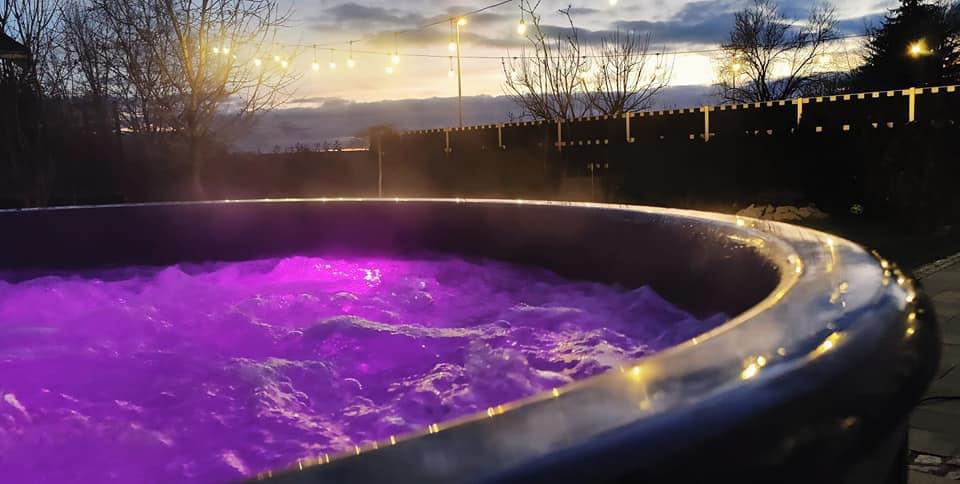Advantages of Hot Tubs with Fiberglass Inserts
Hot tubs with fiberglass inserts are easy to clean, more hygienic, and require less maintenance. When you purchase a hot tub with an insert, you can use it immediately by connecting the heater.
Wood is a natural material, and to maintain its appearance, it’s recommended to treat, oil, or paint it once a year.
Common cleaning agents suitable for baths or pools can be used to clean the fiberglass hot tub.
It’s advised to clean the heater every 3rd to 5th use, depending on the amount of ash accumulated.
To protect the inside of the hot tub from dirt such as leaves, branches, dust, or other debris, use a hot tub cover.
During warmer months, when the water is kept in the hot tub continuously and you don’t want to change it after a few uses, it’s important to maintain hygiene and prevent bacterial growth. This can be achieved by using pool water treatments, chlorine tablets, or other water clarifiers.

What Chemicals Should Be Used for Hot Tub Water Disinfection?
Chlorine is one of the most popular water disinfectants. Chlorine and its compounds are used not only for treating water in pools and hot tubs but also for drinking water purification. However, chlorinated water can irritate the skin or cause allergic reactions. If you shower after bathing and use chlorine moderately and as per instructions, you should not experience discomfort while enjoying the hot tub. The recommended chlorine level for hot tub water is 0.6-1.0 milligrams per liter.
Types of Chlorine-based Hot Tub Cleaning Products:
-
Fast-dissolving chlorine tablets: These are 20-gram tablets containing a high concentration of active chlorine. They are used for disinfecting newly filled water. These tablets are also effective when it is necessary to stabilize contaminated, long-untreated pool or hot tub water. The tablets are placed in a skimmer or a chemical dispenser.
-
Slow-dissolving chlorine tablets: These 200-gram tablets are suitable when you want to maintain a constant chlorine level in the water. Multifunctional slow-dissolving tablets are also available, containing chlorine, algaecide, flocculant, and pH stabilizer, so there is no need to separately manage water clarity, pH levels, or algae control. The tablets are placed in a skimmer or chemical dispenser.
-
Liquid hypochlorite: This is a liquid water treatment agent poured into an automatic dispenser. It effectively restores water clarity. Using dosed liquid hypochlorite gives a similar result to using slow-dissolving tablets.
Non-chlorine Chemicals for Hot Tub Cleaning
Non-chlorine chemicals are chosen not only by those who are allergic to chlorine. Some people dislike the smell of chlorine or the unpleasant feeling when water enters the mouth. Chlorine is not considered environmentally friendly, as it dissipates over time due to sunlight, requiring more frequent attention during cleaning.
There are several main methods for chlorine-free water purification:
-
Biologically active copper agents: Copper eliminates algae and bacteria and is used as an additive for drinking water. Modern copper-based products are effective and leave no stains on pool walls. Maintaining a hot tub with such agents requires less time, as the water only needs to be cleaned every other month.
-
Active oxygen: Water purified with active oxygen is gentle, has no unpleasant chemical odor, and is non-allergenic. Active oxygen destroys microbes, bacteria, mold, and fungi. Such products may include an algaecide that helps eliminate algae. When using active oxygen for hot tub water cleaning, remember that it requires a special activator to work effectively.
-
Bromine-based products: Water treatment products with bromine are an excellent alternative to chlorine. Although these products are slightly more expensive, bromine has the advantage of not requiring frequent water checks as with chlorine. However, bromine cannot be protected from the effects of ultraviolet rays, so you may need to use more bromine than chlorine.